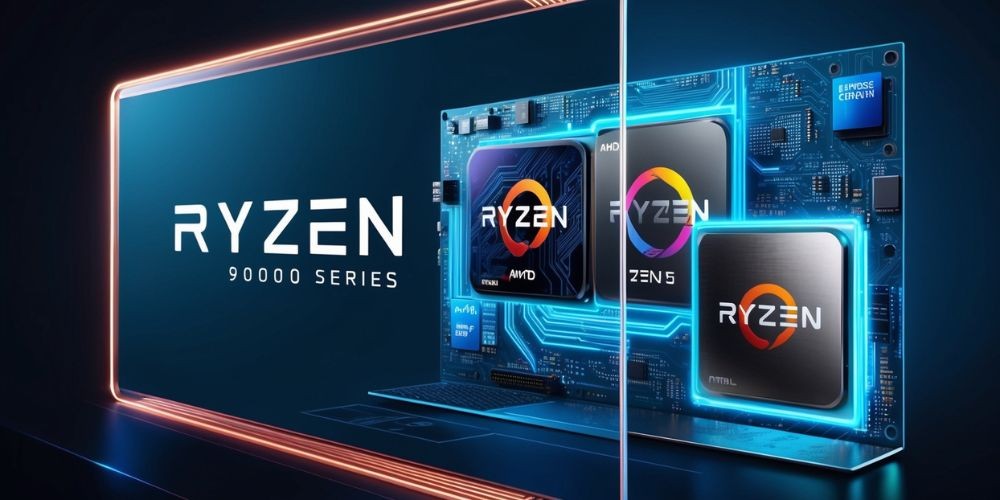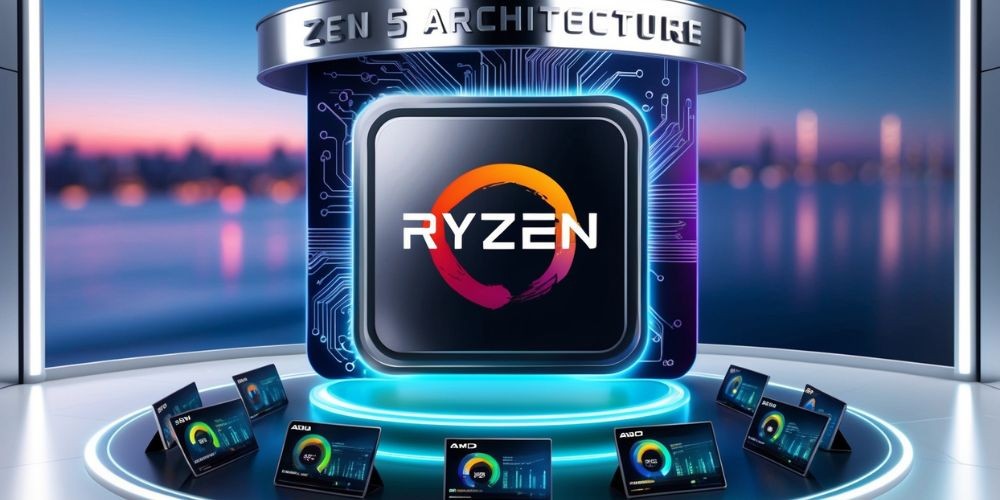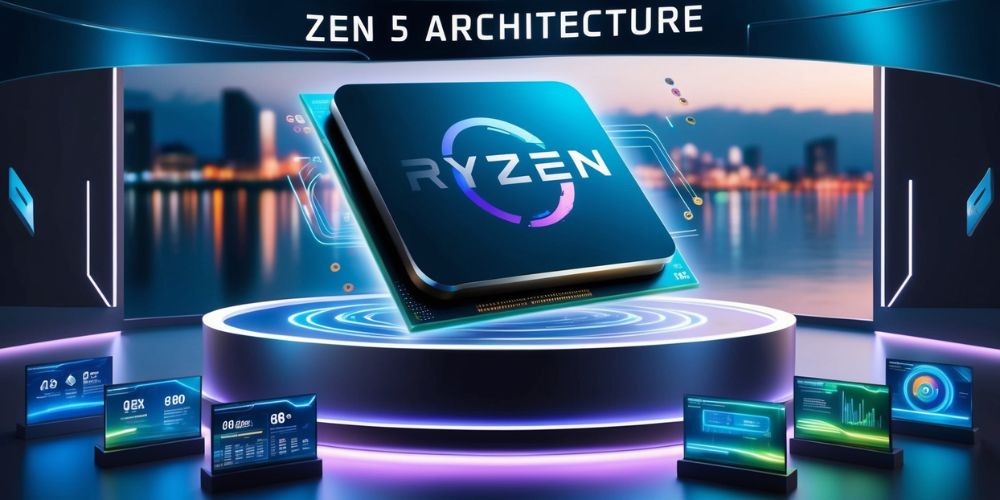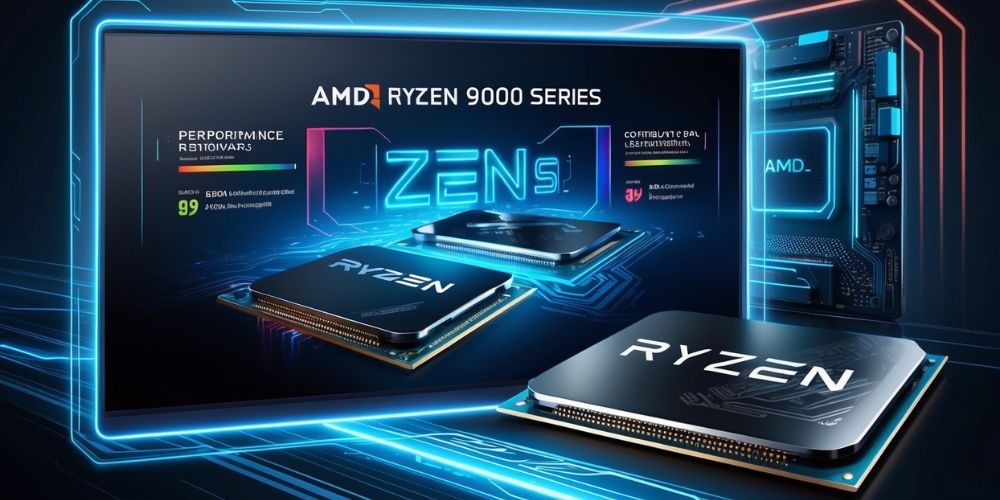Navigating the Ryzen 9000 Landscape: Performance Analysis and Gaming Potential of the 9600X and 9700X
- 2024-09-30
- 0
As the landscape of computer processors evolves, enthusiasts and professionals alike eagerly anticipate the latest advancements. Following the release of AMD's Ryzen 9000 CPUs, which showcase the robust Zen 5 architecture, it's time to delve into the capabilities of the Ryzen 5 9600X and the Ryzen 7 9700X models. As AMD embarks on this new chapter, users are left contemplating whether these new models are worth investing in, especially with the existing Ryzen 7000 parts and the anticipated higher-performance variants on the horizon. Let’s explore how these new entrants stack up against their predecessors and the competition from Intel in both gaming and content creation benchmarks.
The Arrival of Ryzen 9000

AMD recently unveiled its newest offerings in their processor lineup, marking significant enhancements in performance and efficiency. The Ryzen 5 9600X, priced at £269/$279, features six cores, while the Ryzen 7 9700X with eight cores carries a price tag of £339/$359. Set to hit the shelves on August 8th, these mainstream models have generated buzz about their potential gaming prowess and content creation capabilities. Following shortly after will be the Ryzen 9 series featuring 12-core and 16-core designs.
With gaming-focused X3D variants expected later this year and enticing discounts offered on previous generation Ryzen 7000 models, the question arises: Are these new CPUs truly compelling, or are they simply incremental upgrades?
Architectural Advancements
The new Ryzen 9000 models incorporate the groundbreaking Zen 5 architecture, which promises remarkable advancements in performance metrics. AMD claims an average increase of 16 percent in instructions per clock (IPC) compared to the Ryzen 7000 series, indicating a potential for greater single-core performance. They are compatible with the existing AM5 socket, ensuring that consumers don't need to overhaul their motherboards for these upgrades.

What drives these efficiency gains? A combination of architectural improvements—including enhanced branch prediction, better AVX-512 support, and doubled data bandwidth between L2 and L1 caches—contributes significantly. The transition to a more efficient 4nm chip design also means that the new processors operate at lower thermal design power (TDP). By comparison, the Ryzen 5 and Ryzen 7 have ratings of 65W, a significant reduction from the 105W of their preceding generations, culminating in improved thermal management.
Testing Methodology
Our testing methodology mirrors past Ryzen evaluations, employing the ASRock X670E Taichi motherboard, paired with G.Skill Trident Z5 Neo DDR5-6000 CL30 RAM. The big upgrade comes from the graphics department where we utilized an RTX 4090 Founders Edition, facilitating a more comprehensive test of the CPU's capabilities across demanding gaming scenarios.
In addition to our new Ryzen models, we included a selection of Ryzen 3000 and 5000 CPUs, alongside Intel's 14th-gen processors, to examine how these new chips measure against a wider spectrum of competitors.

For storage, we leveraged a 4TB Lexar NM790 PCIe 4.0 NVMe SSD and a 4TB Kingston KC3000, ensuring high data throughput for our tests. The testing environment was rigorously maintained with the latest Windows updates and chipset drivers, making certain of the integrity and relevance of our results.
Benchmarking Content Creation
Benchmarks for content creation play a critical role in evaluating CPU performance under practical conditions. They provide insights into both single-core and multi-core capabilities. We utilized Cinebench, known for simulating realistic workloads, which also serves as a synthetic benchmark. Our analysis in this regard began with the Cinebench 2024 test, newly integrated into our evaluations.
The Ryzen 5 9600X and Ryzen 7 9700X demonstrated commendable results, achieving improvements of 16 percent and 18 percent in single-core scores over their predecessors. However, multi-core performance improvements showcased more modest figures, coming in at 11 percent and a mere 4 percent, respectively.
In testing conditions, we found that the CPUs maxed out at temperatures around 62°C. To push performance further, we adjusted the TDP settings in the BIOS, revealing enhanced performance at the cost of increased temperatures.

Continuing with the legacy Cinebench R20 tests, the Ryzen 9000 series exhibited similar single-core gains (+14 percent) compared to the last generation. However, the numbers also highlighted Intel's competitive edge, with the 14600K and 14700K scoring significantly higher in multi-core tests.
Transcoding Performance with Handbrake
Next, we assessed the transcoding capabilities through Handbrake, converting a 4K video file using various codecs. Here, the 9600X showed a marginal increase in performance with a 3 percent faster H264 benchmark compared to its predecessor, although it marked an 8 percent gain in H265, likely attributable to the architectural optimizations. Interestingly, the 9700X exhibited a slight decrease in performance in the H264 test compared to the 7700X, presenting a puzzling inconsistency. In the HEVC test, normal results returned, albeit with minimal improvement.
Once again, increasing the 9700X's TDP to 105W provided a reasonable performance boost of 14 percent compared to the 7600X, though it resulted in elevated temperature levels, which needs to be a consideration for potential users.

Gaming Benchmarks - The Real Test
As critical as content creation benchmarks are, gaming performance remains a significant factor for many users. Testing encompassed a variety of demanding titles at resolutions from 1080p to 4K, helping us determine how these new processors handle intensive scenarios where frame rates and responsiveness matter most.
While specific gaming benchmarks are to be discussed, expectations are set for a discernible performance uptick given the advancements of the Ryzen 9000 series. However, comparisons with the existing and highly praised Ryzen 7 7800X3D are inevitable, as this model continues to be touted as the best option for high-end gaming. Would the improvements in architecture and efficiency be enough to dethrone the reigning champion, or would limitations keep AMD's new models at bay in the gaming sphere?

Conclusion - Worth the Hype?
The Ryzen 5 9600X and 9700X undoubtedly bring improvements that may appeal to users looking to upgrade from older generations or new builders seeking solid performance for gaming and content creation. With significant enhancements in power efficiency and competitive performance benchmarks, they offer a compelling option in the current market. However, as we weigh their capabilities against the premium Ryzen 7 7800X3D and compare it with the Intel offerings, the decision may ultimately hinge on specific user needs and gaming preferences.
In conclusion, while the Ryzen 9000 series exemplifies AMD's drive for innovation, especially with the Zen 5 architecture, prospective buyers should assess their needs and consider context before making a purchase. The landscape is evolving, and AMD has positioned itself firmly within this competitive arena, prepared to face the evolving demands of performance computing.






Leave a comment
Your comment is awaiting moderation. We save your draft here
0 Comments